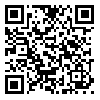Volume 18, Issue 2 (9-2020)
sjsph 2020, 18(2): 139-158 |
Back to browse issues page
Download citation:
BibTeX | RIS | EndNote | Medlars | ProCite | Reference Manager | RefWorks
Send citation to:



BibTeX | RIS | EndNote | Medlars | ProCite | Reference Manager | RefWorks
Send citation to:
Tajvar M, Yaseri M, Mahmoudi R, Karami B. Active Aging Index and Its Individual Determinants in Tehran, Iran. sjsph 2020; 18 (2) :139-158
URL: http://sjsph.tums.ac.ir/article-1-5885-en.html
URL: http://sjsph.tums.ac.ir/article-1-5885-en.html
1- PhD. Assistant Professor, Department of Health Management and Economic, School of Public Health, Tehran University of Medical Sciences, Tehran, Iran
2- PhD. Associate Professor, Department of Epidemiology and Biostatistics, School of Public Health, Tehran University of Medical Sciences, Tehran, Iran
3- MSc. Department of Health Management and Economic, School of Public Health, Tehran University of Medical Sciences, Tehran, Iran
4- PhD. Student, Department of Health Management and Economic, School of Public Health, Tehran University of Medical Sciences, Tehran, Iran ,b-karami@razi.tums.ac.ir
2- PhD. Associate Professor, Department of Epidemiology and Biostatistics, School of Public Health, Tehran University of Medical Sciences, Tehran, Iran
3- MSc. Department of Health Management and Economic, School of Public Health, Tehran University of Medical Sciences, Tehran, Iran
4- PhD. Student, Department of Health Management and Economic, School of Public Health, Tehran University of Medical Sciences, Tehran, Iran ,
Abstract: (3709 Views)
Background and Aim: “Active ageing” is the process of optimizing opportunities for health, participation and security of the elderly in order to enhance their quality of life. This study aimed to measure the Active Ageing Index (AAI) in Tehran at the individual level and determine its determinants.
Materials and Methods: This quantitative cross-sectional study included 590 old people 55 years old and above, selected by randomized cluster sampling and interviewed at their homes in various areas of Tehran. The AAI tool, which includes 4 domains ─ employment, participation, secure/safe life and an empowering environment ─ and 22 indicators was used to measure active ageing. The association between individual characteristics of older people and their AAI scores was determined using the mixed-effect linear regression analysis method, with the STATA software.
Results: The overall AAI score in Tehran was found to be 26.8 out of 100, it being 33.9 and 20.6 for men and women, respectively. Being a women, older, poorer, and living alone or in a large family resulted in significantly lower AAI scores as compared to being a man, younger, richer, living with others, and living in a smaller family.
Conclusion: Iranian older people, particularly women, are experiencing relatively inactive lives. Their AAI scores are particularly low in the third and fourth domains. Considering the high rate of population aging in Iran, providing a safe environment for an active life for the elderly, particularly for the groups found to have a less active life, is a top priority.
Materials and Methods: This quantitative cross-sectional study included 590 old people 55 years old and above, selected by randomized cluster sampling and interviewed at their homes in various areas of Tehran. The AAI tool, which includes 4 domains ─ employment, participation, secure/safe life and an empowering environment ─ and 22 indicators was used to measure active ageing. The association between individual characteristics of older people and their AAI scores was determined using the mixed-effect linear regression analysis method, with the STATA software.
Results: The overall AAI score in Tehran was found to be 26.8 out of 100, it being 33.9 and 20.6 for men and women, respectively. Being a women, older, poorer, and living alone or in a large family resulted in significantly lower AAI scores as compared to being a man, younger, richer, living with others, and living in a smaller family.
Conclusion: Iranian older people, particularly women, are experiencing relatively inactive lives. Their AAI scores are particularly low in the third and fourth domains. Considering the high rate of population aging in Iran, providing a safe environment for an active life for the elderly, particularly for the groups found to have a less active life, is a top priority.
Type of Study: Research |
Subject:
Public Health
Received: 2020/09/19 | Accepted: 2020/09/15 | Published: 2020/09/15
Received: 2020/09/19 | Accepted: 2020/09/15 | Published: 2020/09/15
Send email to the article author
| Rights and permissions | |
 |
This work is licensed under a Creative Commons Attribution-NonCommercial 4.0 International License. |





